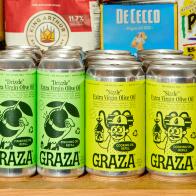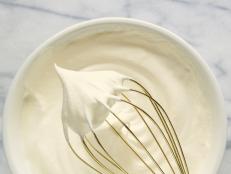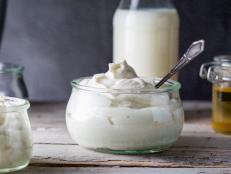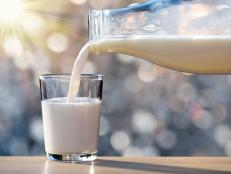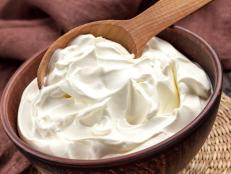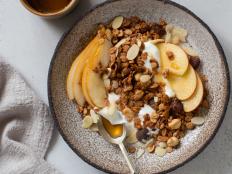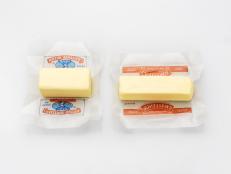Half and Half Versus Heavy Cream: What's the Difference?
Can you use them interchangeably?

miniseries/Getty Images
By Layla Khoury-Hanold for Food Network Kitchen
Layla Khoury-Hanold is a contributor at Food Network.
You might prefer half-and-half in your coffee and reserve heavy cream for making homemade whipped cream, only to find yourself wondering, what exactly is the difference between the two? You might also have discovered that you have one in your fridge but not the other and wondered if you can substitute them in recipes. Here, we break down the differences between half-and-half and heavy cream, and when you can use them interchangeably.
What Is Half-and-Half?
Half-and-half is a mixture of equal parts whole milk and cream. According to the US Food and Drug Administration (FDA), half-and-half contains between 10.5 percent and 18 percent milk fat (it varies because heavy cream’s milk fat content ranges from 36 percent to 40 percent, but anything you buy at the store labelled half-and-half will work in recipes). Half-and-half is often used in cream-based desserts with a light richness, such as panna cotta. Half-and-half also lends extra creaminess to dishes calling for milk, including cream sauces, mac ‘n’ cheese, mashed potatoes, scrambled eggs and baked goods. To learn more about half-and-half and its substitutes, check out our story What is Half and Half?.
What Is Heavy Cream?
Heavy cream is a high-fat cream. It is made from the milk fat that collects on top of fresh milk that hasn’t been homogenized (homogenization is the process that turns the fat in milk into miniscule droplets that stay suspended in the milk). Per the FDA, heavy cream contains at least 36 percent milk fat (what you’ll typically find at the grocery store) and up to 40 percent milk fat (which is more often sourced by restaurants). Heavy cream can also be labelled as heavy whipping cream—they are exactly the same product but with different names. For a more detailed look at heavy cream and its substitutes, check out our story What Is Heavy Cream? And What Is a Heavy Cream Substitute?.
Half-and-Half vs. Heavy Cream
Both half-and-half and heavy cream are cream-based products and, according to the FDA, both are pasteurized or ultra-pasteurized, and can also be homogenized. The biggest difference between half-and-half and heavy cream is the milk fat content. According to the FDA, half-and-half contains between 10.5 percent to 18 percent milk fat, while heavy cream contains between 36 percent and 40 percent milk fat. Because heavy cream contains more fat, it is thicker and has a richer taste and a creamier mouthfeel than half-and-half. Because half-and-half contains milk as well as cream, it has a thinner consistency, is less rich in taste and doesn’t have as creamy a mouthfeel compared to heavy cream, but the milk imparts more flavor.
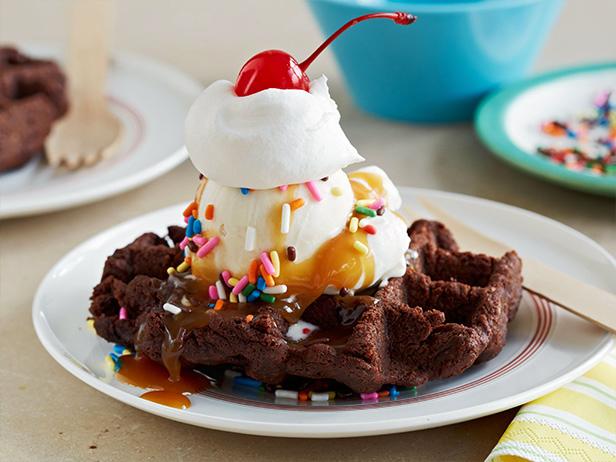
Can I Use Half-and-Half and Heavy Cream Interchangeably?
It depends. If you’re making custard or custard-based fillings, as with this Lime-Coconut Custard Pie, you can use half-and-half and heavy cream interchangeably, though using heavy cream will result in a richer end product. Other examples where you can use half-and-half and heavy cream interchangeably include mashed potatoes, macaroni and cheese, chicken pot pie and bread pudding (keep in mind that heavy cream will yield a richer dish whereas half-and-half will create an end product that’s not as rich, which may be desirable in some cases).
You can swap in half-and-half for heavy cream when making ice cream, but it won’t taste as rich and will have a less creamy mouthfeel.
If your goal is to make whipped cream to use as topping, say, for a Waffled Brownie Sundae (pictured above) or slice of Pumpkin Pie, you’ll need to stick with heavy cream because half-and-half doesn’t have enough fat in it to whip and hold stiff peaks. The same holds true for making homemade butter : you can’t swap in half-and-half for heavy cream because there isn’t enough fat content to hold stiff peaks, which eventually turn into butter the more they are churned.
Related Links:












